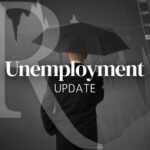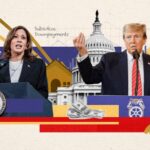By Tom Ozimek
Americans are planning to spend less in the near term, according to a December survey from the Federal Reserve Bank of New York, which showed U.S. household spending growth expectations taking a sharp tumble in what could be a warning sign for the economy.
Household spending growth expectations over the next 12 months fell by a full percentage point, to 5.9 percent, in December, according to the latest New York Fed Survey of Consumer Expectations. That’s the lowest level for the reading since January 2022, when the year-ahead spending growth expectations came in at 5.5 percent.
“The decline was broad-based across age and income groups,” the report said.
Consumer spending is a key driver of the U.S. economy, accounting for around two-thirds of gross domestic product (GDP).
The drop in spending expectations dovetails with a recent downgrade in GDP forecasts from the Federal Reserve. The Fed’s most recent summary of economic projections (pdf) predicts U.S. GDP will grow by a total of just 0.5 percent in 2023. That’s down sharply from September’s projections, which called for a 1.2 percent pace of growth.
Besides hinting at further cooling in the economy, the dip in spending expectations also suggests easing of inflationary pressures.
Inflation expectations in the year ahead fell by 0.2 percentage points, to 5.0 percent, the lowest reading since July 2021, the New York Fed survey showed, a reading that’s likely to be met with some enthusiasm by Fed officials.
In the face of stubbornly high inflation, the Fed has raised rates at its fastest pace since the 1980s, pushing the benchmark rate from near zero in March 2022 to a range of 4.25–4.5 percent.
Yet despite the blistering pace of rate hikes, inflation has eased only moderately since a recent June 2022 peak of 9.0 percent.
Investors are looking ahead to Thursday’s release of the latest data on inflation, as measured by the Consumer Price Index (CPI), which in November came in at an annualized 7.1 percent.
“Anything less than broad-based improvement will rattle investors’ nerves and keep the Fed active,” Bankrate chief financial analyst Greg McBride told The Epoch Times in an emailed statement, referring to market expectations that Thursday’s inflation data will show a decline in price pressures across a broad range of categories.
A number of economists, meanwhile, have said they expect inflation to remain persistently high for a long period of time.
Some argue that the true rate of inflation is actually much higher than the 7 percent or so pace notched in November, with certain components of the CPI measure—specifically housing—showing up in the numbers with a lag.
An alternative measure of inflation that uses the same methodology as the U.S. government used to measure CPI in the 1980s puts November’s inflation figure at a much higher 15.23 percent.
Lower consumer spending, as predicted by the New York Fed survey, is also likely to have an impact on corporate earnings.
Fitch Ratings recently revised down its non-financial corporate revenue forecasts on expectations for slowing economic growth to the point of a recession in the United States, “as high inflation prompts more interest rate hikes, consumer spending slows, and unemployment rises.”
Other Wall Street analysts also have begun trimming their corporate earnings forecasts.
Analysts have slashed their full-year 2023 earnings-per-share forecasts by 4.4 percent, to $230.51, according to FactSet (pdf), which amounts to the sharpest downgrade in around eight years.
Fed Seen Hiking Further Amid Labor Market Tightness
The number of job openings in the United States—a measure of labor market tightness—came in far higher than analysts expected, fueling concerns of more inflation and that the Fed will have to double down on aggressive rate hikes.
Job openings came in at 10.5 million as of the last day of November, according to the latest Department of Labor monthly Job Openings and Labor Turnover Survey (JOLTS).
Market forecasts called for a more modest 10 million vacancies.
At 10.5 million, the number of open jobs far exceeds the six million people that are unemployed in the United States. This means that there are roughly 1.75 available jobs per unemployed person.
While that’s better than the nearly 2-to-1 levels seen in July, when job vacancies soared to a record high, it’s still well above the roughly 1.2 jobs per unemployed person in the years before the pandemic.
It’s also higher than Fed officials are comfortable with, because a mismatch of such proportions between job openings and the number of unemployed persons translates into upward wage pressures and, therefore, inflation.
Federal Reserve Chair Jerome Powell has repeatedly expressed frustration with the historically elevated vacancies-to-unemployed ratio and has called for the need to bring this number down, even at the cost of higher unemployment.
In September, Powell said he saw the “need to have softer labor market conditions,” while acknowledging that pushing interest rates higher would likely mean higher rates of joblessness.
“We need to complete this task,” he said at the time, noting that it won’t be “painless.”
The Fed expects having to take interest rates above 5 percent and keep them there for some time, while forecasting that the unemployment rate will rise to 4.6 percent by the end of 2023.






